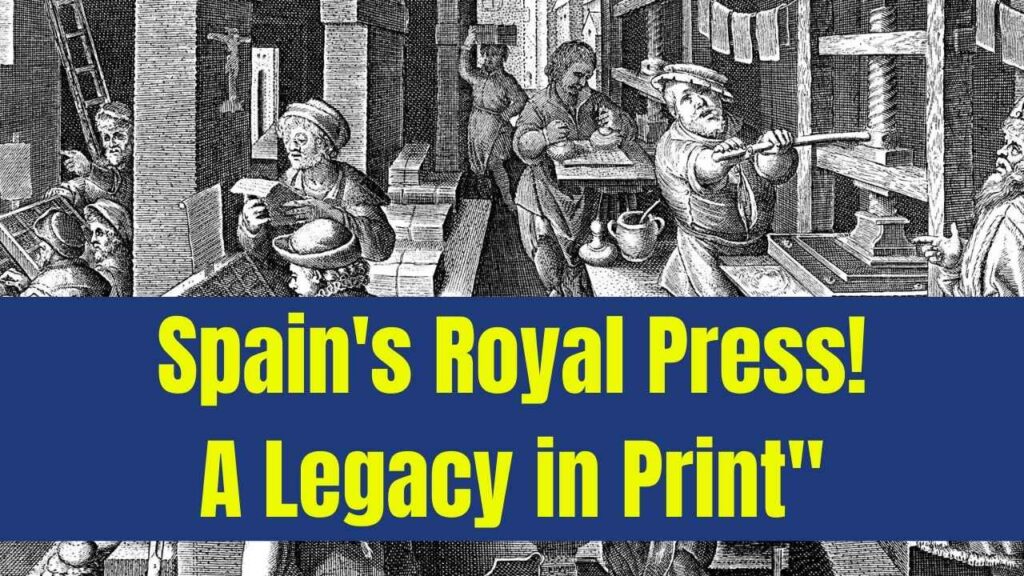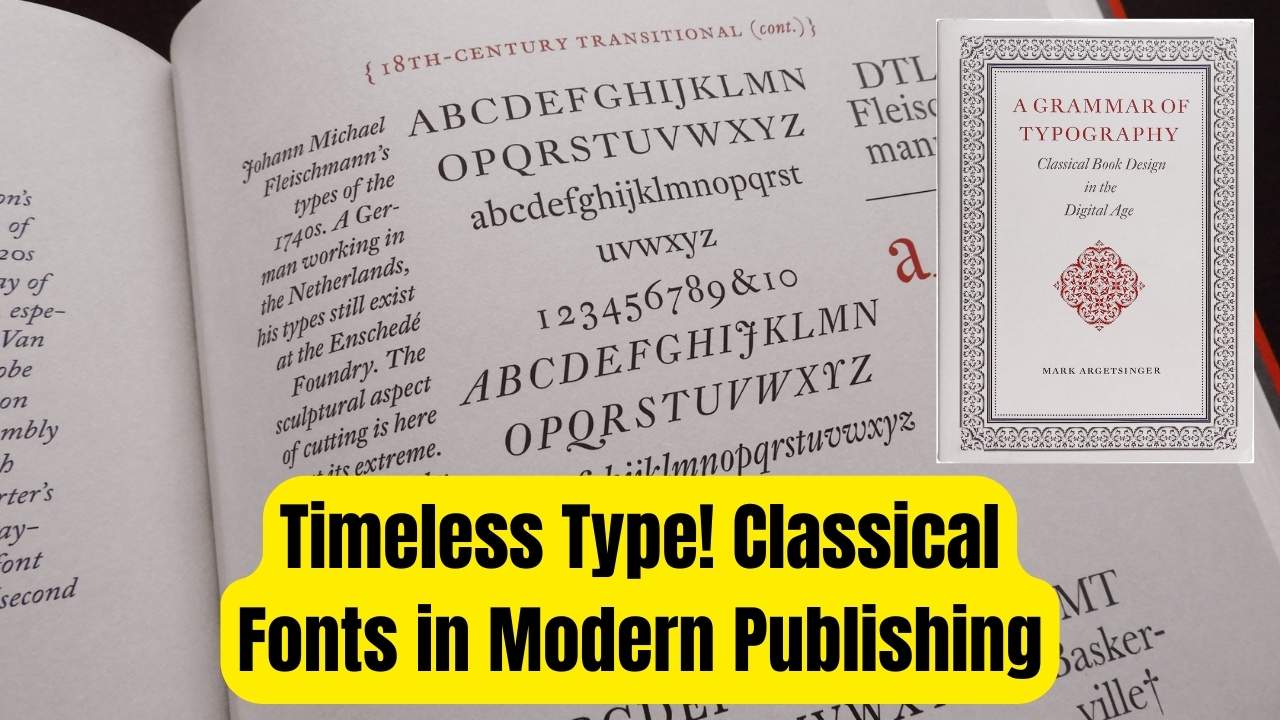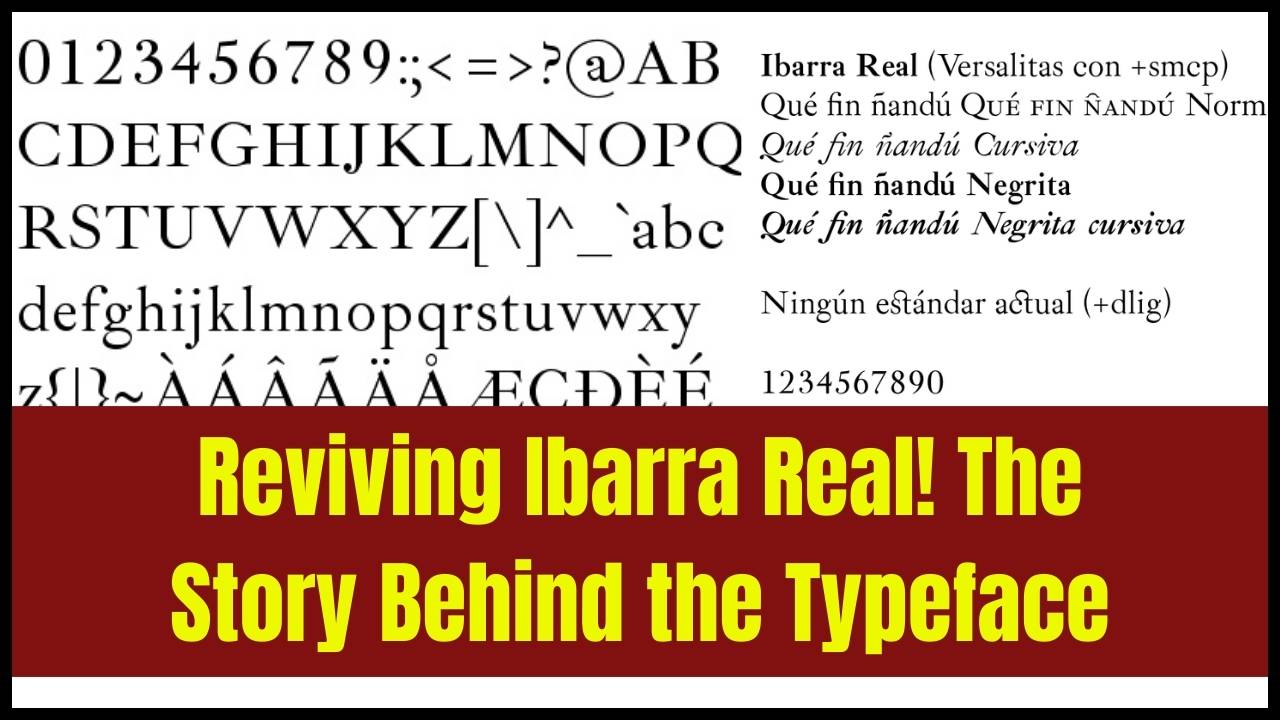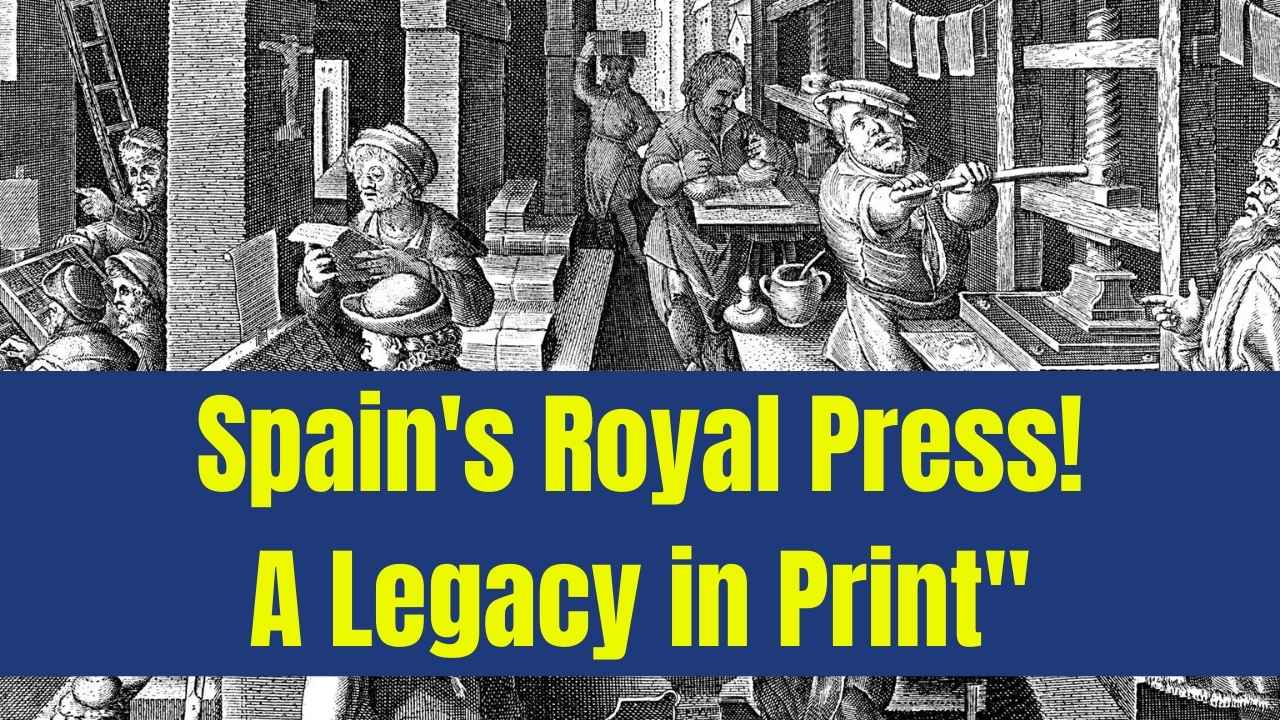
The Spanish Royal Printing Press, also known as the Imprenta Real, holds a pivotal place in the history of printing and publishing. From its establishment in 1594 to its evolution into the modern Imprenta Nacional in the 19th century, this institution helped shape not only Spain’s literary and cultural heritage but also its political landscape. This article delves into the history, impact, and lasting legacy of the Spanish Royal Printing Press, offering a detailed exploration of its role in Spain’s history, providing practical insights, and explaining how it continues to influence modern publishing practices.
In an era where digital media has transformed the way we consume information, it’s easy to forget the revolutionary impact of the printing press. The Spanish Royal Printing Press wasn’t just about printing books – it was about shaping the very narrative of a nation. From the dissemination of knowledge to the spread of political and religious ideologies, the press became a tool of both enlightenment and control.
Key Highlights
| Key Feature | Details |
|---|---|
| Establishment | Founded in 1594 by King Philip II in Madrid |
| First Book Published | Libro de los Monstruos (Book of Monsters) in 1596 |
| Technological Innovations | The introduction of movable type and copperplate engraving |
| Impact on Spanish Language | Standardization of Spanish language and cultural heritage |
| Modern Day Successor | The Imprenta Nacional, active since 1834 |
The Spanish Royal Printing Press, which began as a small operation in 1594, grew into one of the most influential institutions in Spanish history. Its technological advancements, cultural contributions, and role in shaping Spain’s political landscape are still felt today through its modern successor, the Imprenta Nacional. From the dissemination of knowledge to the preservation of language and culture, the Imprenta Real was central to the development of Spain as a modern nation.
In today’s digital world, it’s easy to overlook the importance of historical institutions like the Imprenta Real, but understanding its legacy offers valuable insights into the ways in which printing has shaped societies. The Imprenta Real is a reminder of how technology can influence not only culture but also politics, language, and identity. Its legacy serves as a testament to the power of the printed word and its enduring impact on history.
The Origins of the Spanish Royal Printing Press
The story of the Spanish Royal Printing Press begins in the late 15th century, during the reign of Queen Isabella and King Ferdinand. The printing press, which had been invented in Germany by Johannes Gutenberg, was slowly making its way across Europe. In 1472, the first printing press in Spain was established in Segovia by the German printer Juan Párix.
This marked the beginning of a new era in Spain, where books and ideas could be reproduced on a mass scale. This allowed for the faster spread of knowledge and ideas, something that had been previously impossible with hand-copied manuscripts. The first book printed in Spain was the Sinodal de Aguilafuente, a religious text, marking the first foray into Spain’s rich history of printed works. By the end of the 15th century, cities like Burgos, Salamanca, and Valencia had established their own printing presses, making it clear that the demand for printed materials was growing rapidly.
The Establishment of the Royal Printing Press (1594)
In 1594, during the reign of King Philip II, Spain saw the formal establishment of the Imprenta Real in Madrid. The creation of this royal printing press was both a response to the growing demand for printed materials and a means of consolidating state control over the dissemination of information.
The Spanish Crown recognized the power that printing could wield in terms of both political control and the spread of ideas. In the early years of the Imprenta Real, Julio de Junta, an experienced printer from Florence, was appointed as the royal printer. Junta’s appointment was strategic, as the monarchy sought to use the press to promote state-approved literature, scientific works, royal decrees, and religious texts. The very first book published under the Imprenta Real was printed in 1596.
Over time, the role of the Imprenta Real expanded, moving from simply printing official documents to becoming a hub of intellectual and cultural activity. It began to print works that aligned with the Enlightenment ideals, publishing not just religious texts but also scientific works and philosophical treatises that would help shape Spain’s intellectual landscape in the centuries to come.
The 18th Century: Flourishing Under the Enlightenment
During the 18th century, under the reign of King Charles III, the Spanish Royal Printing Press flourished. The Enlightenment, a period of intellectual and cultural development across Europe, influenced the Imprenta Real in profound ways. The press became an important institution for the dissemination of new ideas, particularly those related to science, politics, and the arts.
In 1780, following the death of Francisco Manuel de Mena, the Spanish government took direct control of the press and renamed it the Imprenta Real. This formalized its role as the national press and aligned it with the political needs of the state. Between 1791 and 1795, a dedicated building for the press was constructed on Calle de Carretas in Madrid.
During this period, the Imprenta Real was instrumental in printing works that were critical to the cultural and intellectual fabric of Spain. The press became synonymous with high-quality publishing, ensuring that only the most meticulously crafted texts were made available to the public. Many works of scientific knowledge were printed and made widely accessible, including translations of major European texts, which helped Spain keep pace with the rapidly advancing intellectual movements of the time.
The 19th Century: From Royal Press to National Press
The early 19th century brought significant political upheaval in Spain, including the Napoleonic invasions and the eventual rise of new political structures. This led to a reorganization of state institutions, including the Royal Printing Press. In 1834, the Imprenta Real was officially renamed the Imprenta Nacional to reflect its broader national role in printing government documents, laws, and other official state publications.
The Imprenta Nacional continued to print official works but was also tasked with producing textbooks, scientific works, and historical texts. The changes in the press during the 19th century reflect the transformation of Spain into a modern nation-state, where the control and dissemination of information were essential for the functioning of a centralized government.
Technological Innovations and Contributions
Throughout its history, the Spanish Royal Printing Press was at the forefront of technological advancements in the printing industry. One of the most notable innovations was the introduction of copperplate engraving and movable type. These advances allowed for the creation of more detailed and intricate designs, improving both the quality and speed of printing.
The Imprenta Real also played a crucial role in the development of Spanish typography. It was responsible for setting many of the typefaces that became standard in Spanish publishing. These typefaces, characterized by their elegance and readability, contributed to the unique look of Spanish printed materials during this period.
Additionally, the press was instrumental in the standardization of the Spanish language. By printing dictionaries, grammar books, and language guides, the Imprenta Real helped establish a uniform approach to written Spanish, which was crucial for communication across Spain’s vast territories. The cultural and intellectual preservation offered by the Imprenta Real cannot be overstated, as it helped preserve a wide array of Spanish historical documents and literary works.
Expanding Beyond Spain’s Borders
Although the Imprenta Real operated within Spain, its influence spread across Spanish-speaking regions of the world. As Spain expanded its empire across the Americas, the printing press played an integral role in maintaining communication between the colonies and the Spanish Crown. Printed materials like royal decrees, religious texts, and official documents were sent to the colonies, helping to establish Spanish authority in the New World.
Furthermore, the Imprenta Real helped foster intellectual connections between Spain and its colonies. As the Enlightenment began to take hold in Spain, the Imprenta Real played a role in distributing new ideas across the empire, affecting political, cultural, and scientific developments throughout Spanish America.
The Legacy of the Spanish Royal Printing Press
Today, the legacy of the Imprenta Real lives on through the Imprenta Nacional, which is still in operation and continues to publish official state documents. The imprint of the Imprenta Real is evident not only in the physical copies of its printed works but also in the cultural and intellectual traditions it helped nurture. Its contributions to the preservation of Spain’s history, literature, and language are still felt today.
For those interested in the history of printing or the development of the Spanish language, the Imprenta Real offers a fascinating case study in how technology can shape a nation’s culture and identity. By examining the history of this institution, we can gain a deeper appreciation for the role of printing in the dissemination of knowledge and the formation of national identity.
Frequently Asked Questions (FAQs)
1. What was the first book printed by the Spanish Royal Printing Press?
The first book printed by the Imprenta Real was Libro de los Monstruos (Book of Monsters) in 1596. This marked the beginning of the press’s history.
2. How did the Spanish Royal Printing Press contribute to the Enlightenment?
The press played a key role in disseminating Enlightenment ideas, including scientific theories and philosophical works, which helped shape intellectual and cultural life in Spain.
3. What role did the Imprenta Real play in the standardization of the Spanish language?
The Imprenta Real printed dictionaries, grammar books, and linguistic guides that helped standardize the Spanish language, making it more accessible and uniform across the country.
4. When did the Imprenta Real become the Imprenta Nacional?
In 1834, during a period of political transformation in Spain, the Imprenta Real was renamed the Imprenta Nacional to reflect its expanded role in printing government documents.
5. How did the Imprenta Real influence Spanish colonies?
The Imprenta Real played an important role in maintaining communication with Spain’s colonies, distributing official documents, religious texts, and new Enlightenment ideas that influenced the intellectual and political life of Spanish America.







